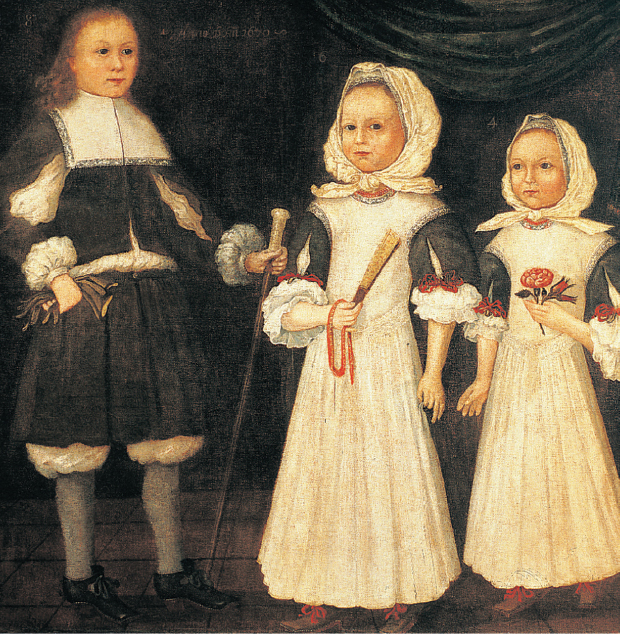How did New England society change during the seventeenth century?
Printed Page 89
THE NEW ENGLAND COLONISTS, unlike their counterparts in the Chesapeake, settled in small towns, usually located on the coast or by a river (see Map 4.1). Massachusetts Bay colonists founded 133 towns during the seventeenth century, each with one or more churches. Church members’ fervent piety, buttressed by the institutions of local government, enforced remarkable religious and social conformity in the small New England settlements. During the century, tensions within the Puritan faith and changes in New England communities splintered religious orthodoxy and weakened Puritan zeal. By 1700, however, Puritanism retained a distinctive influence in New England.

Figure false: David, Joanna, and Abigail Mason
Figure false: In this 1670 painting, which depicts the children of Bostonians Joanna and Anthony Mason, the artist lavished attention on the young subjects’ elaborate clothing and adornments: fashionable slashed sleeves, fancy lace, silver-studded shoes, necklaces for the girls, and a silver-headed cane for the boy. The portrait expresses the growing respect for wealth and its worldly rewards in seventeenth-century New England. Fine Arts Museums of San Francisco. Gift of Mr. and Mrs. John D. Rockefeller III.
CHRONOLOGY
1636
- – Rhode Island colony is established.
- – Connecticut colony is founded.
1638
- – Anne Hutchinson is excommunicated.
1642
- – Puritan Revolution inflames England.
1649
- – English Puritans win the civil war.
1656
- – Quakers arrive in Massachusetts and are persecuted.
1662
- – Many Puritan congregations adopt the Halfway Covenant.
1692
- – Salem witch trials.